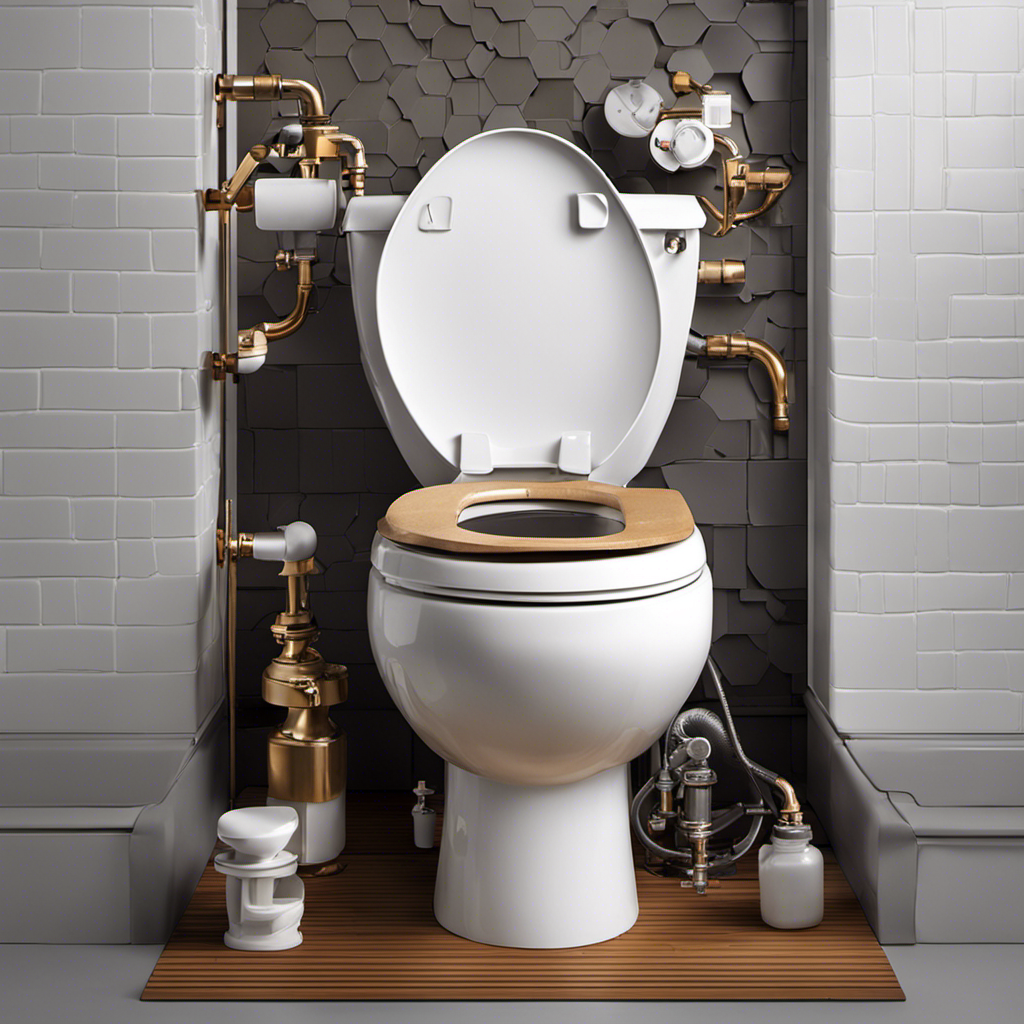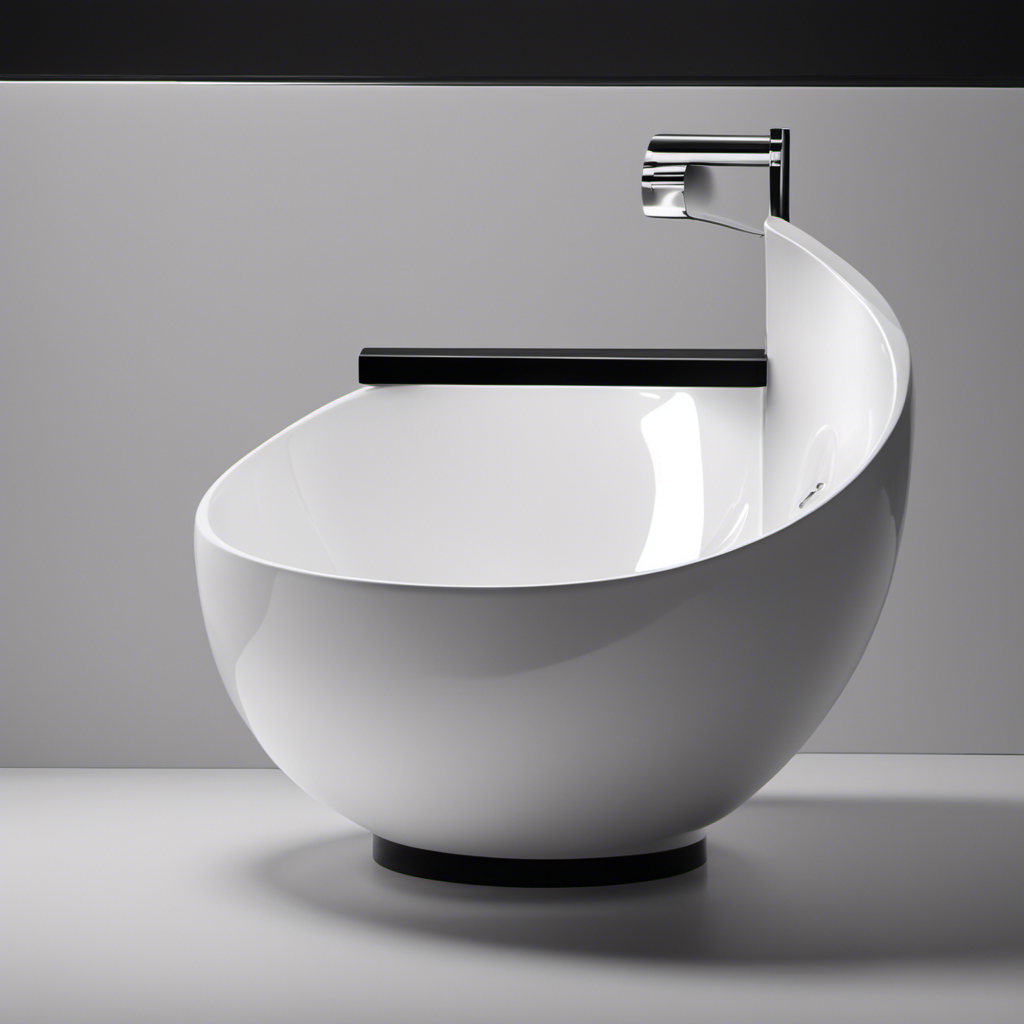Have you ever heard the saying, ‘A running toilet is like money going down the drain’? Well, let me tell you, it’s not just a saying – it’s a real plumbing issue that can cost you both water and money.
In this article, I will delve into the common causes of a running toilet, from a faulty flapper valve to water pressure problems.
So, buckle up and get ready to dive into the world of toilet troubles.
Key Takeaways
- Running toilet can be caused by a clogged drain or toilet bowl cracks.
- A faulty flapper valve, which controls the flow of water into the bowl, can cause continuous water leakage.
- A malfunctioning fill valve, which controls the flow of water into the tank after each flush, can lead to a running toilet.
- Water pressure problems, such as low water pressure from clogged pipes or a faulty pressure regulator, can also affect the functioning of a toilet.
Common Plumbing Issues
One of the most common plumbing issues is a running toilet. A running toilet occurs when water continuously flows into the toilet bowl, even when it is not being used.
There are several possible causes for this problem. One cause could be a clogged drain. When the drain is clogged, water cannot flow out of the toilet properly, causing it to continuously refill.
Another possible cause is toilet bowl cracks. Cracks in the toilet bowl can lead to water leakage, which can trigger the constant filling of the tank.
It is important to address these issues promptly to prevent water waste and potential damage to your plumbing system.
Faulty Flapper Valve
A faulty flapper valve is often the culprit for a toilet that won’t stop running. The flapper valve is a rubber seal that sits at the bottom of the toilet tank and controls the flow of water into the bowl.
When the toilet is flushed, the flapper valve lifts, allowing water to rush into the bowl. Once the tank is empty, the flapper valve should close tightly, preventing any more water from entering the bowl. However, if the flapper valve is worn out or damaged, it may not create a proper seal, causing water to continuously leak into the bowl.
This constant flow of water not only leads to a noisy toilet but also results in significant water wastage. To resolve this issue, a simple toilet repair involves replacing the faulty flapper valve with a new one, ensuring a proper seal and preventing water wastage.
Malfunctioning Fill Valve
To fix the issue of a malfunctioning fill valve, you should replace it with a new one to ensure proper water flow and prevent any further problems.
The fill valve is an essential component of a toilet’s flushing system. It is responsible for controlling the flow of water into the tank after each flush. When the fill valve malfunctions, it can lead to a running toilet, where water continuously flows into the tank.
Troubleshooting a running toilet starts with identifying the faulty fill valve. Signs of a malfunctioning fill valve include a constantly running toilet, fluctuating water levels, or a slow fill rate.
Replacing the fill valve involves shutting off the water supply, disconnecting the old valve, and installing a new one according to the manufacturer’s instructions.
Regular maintenance and prompt fill valve replacement will help keep your toilet functioning properly and prevent water wastage.
Water Pressure Problems
Water pressure problems can be caused by a variety of factors, such as clogged pipes or a faulty pressure regulator.
Low water pressure is often a result of blockages in the pipes, such as mineral deposits or debris. This restricts the flow of water and can lead to weak or insufficient pressure.
High water pressure, on the other hand, can be caused by a malfunctioning pressure regulator. When the regulator fails to regulate the pressure, it can result in excessive force in the pipes, leading to bursts or leaks.
Both low and high water pressure can have negative effects on the performance of plumbing fixtures, including toilets.
Speaking of toilets, one common issue that can arise from water pressure problems is a leaky toilet tank.
Leaky Toilet Tank
Is your toilet tank leaking due to water pressure problems? If so, it’s important to address the issue promptly to prevent further damage and potential water waste. Here are some steps you can take to maintain and replace your toilet tank:
-
Regular maintenance:
-
Check for cracks or leaks in the tank and fix them immediately.
-
Inspect the flush valve and flapper for any signs of wear and tear.
-
Toilet tank replacement:
-
Turn off the water supply to the toilet and flush to drain the tank.
-
Disconnect the supply line and remove any remaining water.
-
Unscrew the bolts attaching the tank to the bowl and carefully lift off the tank.
-
Install the new tank and reconnect the supply line.
-
Test for leaks and make necessary adjustments.
Frequently Asked Questions
How Can I Fix a Running Toilet That Is Caused by a Faulty Flapper Valve?
To fix a running toilet caused by a faulty flapper valve, I would start by turning off the water supply. Then, I’d remove the old flapper and replace it with a new one. This is a common problem with toilets and can be easily fixed.
What Are the Signs of a Malfunctioning Fill Valve in a Running Toilet?
When a toilet keeps running, it may be due to a malfunctioning fill valve. To troubleshoot water pressure, check for signs like inconsistent flushing or continuous water flow.
How Can I Troubleshoot Water Pressure Problems That Are Causing My Toilet to Run Continuously?
To troubleshoot water pressure problems causing a continuously running toilet, start by checking the water supply valve’s position. Next, inspect the fill valve for any clogs or malfunctions. Common toilet problems like these can often be resolved with these simple steps.
Are There Any Quick Fixes for a Leaky Toilet Tank That Is Causing It to Run?
There are a few quick DIY solutions to fix a leaky toilet tank that is causing it to run. Common causes of toilet leaks include worn-out flapper valves, faulty fill valves, or a loose toilet handle.
Can a Running Toilet Lead to Higher Water Bills, and if So, How Can I Prevent This?
A running toilet can lead to higher water bills and negatively impact the environment. To reduce water usage in my home, I can prevent this by fixing any leaks promptly and ensuring the toilet is properly maintained.
Conclusion
As I wrap up this investigation into the mysterious case of the running toilet, a chilling realization dawns on me.
It is not just a simple plumbing issue, but a hidden menace lurking within our homes. The faulty flapper valve and malfunctioning fill valve are merely symptoms of a much larger problem.
The water pressure, seemingly innocent, holds the key to uncovering the truth. And let us not forget the leaky toilet tank, silently wasting water, as if mocking our ignorance.
The suspense is palpable as we delve deeper into the darkness of this enigma.










